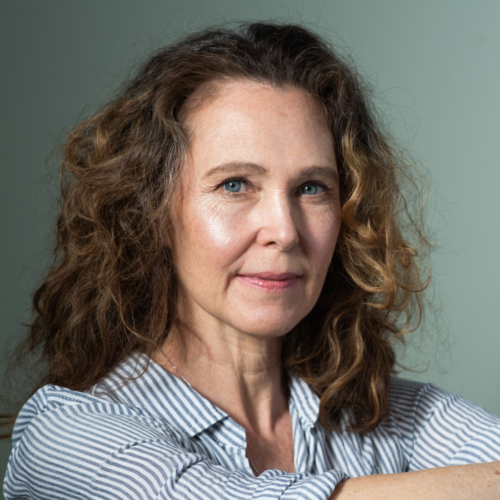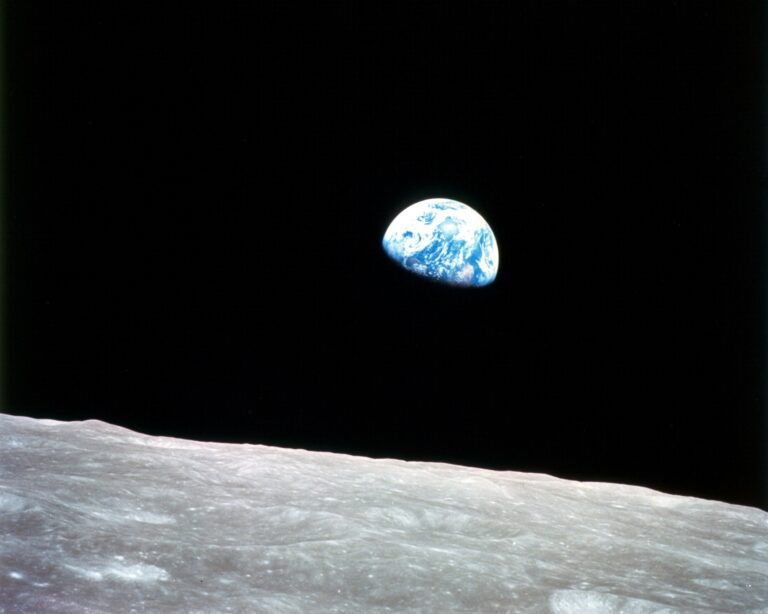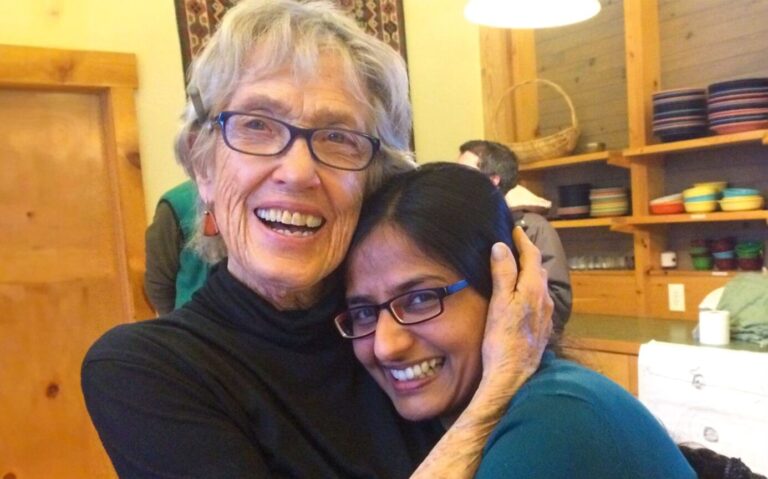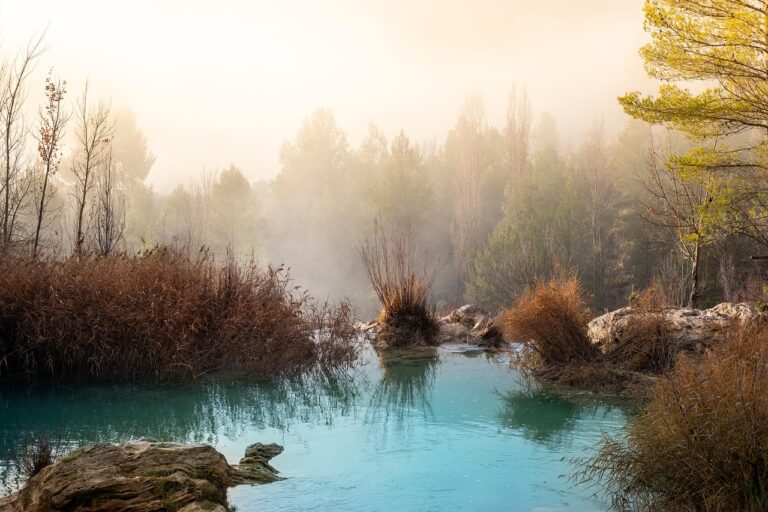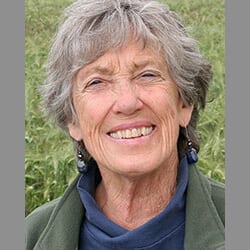Hurricanes Harvey, Irma, and Maria have come and gone, leaving hundreds dead. We’re left facing a dire reality: we live on a warming planet. Homes blown apart. Lives lost. Ecosystems flattened. This is how climate change arrives at our doorstep.
With the destruction comes a wider acceptance of the scientific reality— and a growing motivation to contribute to solutions. But destruction also brings despair, fear about the future, grief, and panic. As we grapple with our new reality, contemplative practice can offer techniques for holding these challenging truths.
Spiritual practices are not alternatives to swift, wise action. They are complementary disciplines to education and activism. Spiritual resources can help us move from desperation to sustainable activism.
How do we get from anger to compassion?
Spiritual practices may not provide concrete climate solutions, but they do have the potential to shift consciousness. Practices and teachings can address how we relate to our grief, despair, and fear. These resources help restructure our understanding of what it means to be human, now, on our home planet.
Here are five tried and true contemplative practices from the Buddhist tradition that can help us hold the truths of climate change, species extinction, and the ecological crisis in our hearts and minds. While this list of practices is not by any means exhaustive, it is a beginning. Even though their roots are ancient, these practices are timely as we encounter the truth of suffering on a global scale.
1) Find a grounding in ethics
Some people see climate change as an ecological issue. Some see it as an economic issue. Some see it as a social issue. But, we know that human actions are at fault. In this sense, climate change is an ethical issue. Our beliefs about justice — the values that we hold most dear— form the bedrock of our actions. These values are largely learned and assimilated from our culture. Each of us — as individuals and from within our communities — can influence the values upheld by our culture.
Climate change is happening because of what we have valued and how we have conceived of our identity as human beings on this planet. The values have come from a dominant industrial ethos. Climate change, therefore, isn’t just a matter of what we can do. It’s a matter of what we should do. Contemplative traditions teach moral reflections on our actions, speech, and thought. The Buddha emphasized ethics, śila, as a fundamental training for his monks. His monastic code of ethics was constructed around the idea of ahimsa, or non-violence. Essentially, the Buddha taught that ethical actions are those arising from a commitment to non-harm, gentleness, and simplicity.
Spiritual practices are not alternatives to swift, wise action. They are complementary disciplines to education and activism. Spiritual resources can help us move from desperation to sustainable activism.
Buddhism and other religious traditions have long identified love and compassion as motivators that drive effective and sustainable action. If we extend śila to our relationship to land, water, natural resources, and animals, then non-harm, gentleness, and simplicity become points of reflection for change-making.
Later Buddhist traditions developed rules of conduct, oriented towards compassion, such as the Bodhisattva precepts. These precepts extend from the idea that bodhicitta, or wise compassion, is the ground of ethical action and speech. We too can ground our activism, social engagement, and resistance in wise compassion. We can make our activism not about what we are working against, but what we are working for. If we place our activism and relationship to the earth squarely among our deepest values and beliefs, we are more likely to turn again and again to the issue — not out of obligation, but out of genuine commitment.
2) Welcome uncertainty
If there is one thing that climate scientists agree on, it is that we don’t know for certain what will happen as the earth warms. Evidence indicates that tipping points and crises cannot be averted. We have no how idea how much we can slow or ameliorate the suffering. We do not even know how long our species — and others — can survive changes that destabilize the conditions necessary for life. We are stepping into the void.
We want to know if our children and grandchildren will be able to visit the shoreline, walk in the forest, breathe clean air, and live in safety. It is human to fear that the world as we know it may be ending. This uncertainty can feel deeply unsettling.
Many of the Buddha’s teachings focus on uncertainty, not as an inconvenience, but as a source of liberation. The Buddha taught that nothing is certain, because nothing transcends impermanence. He called impermanence a “mark of existence— an undeniable truth of what it means to be alive. To encourage his monks and nuns to face their mortality, he sent them to meditate in charnel grounds — open-air cemeteries — where they could witness decaying corpses.
The Buddha was not trying to torture his disciples. He was trying to free them. While awareness of our mortality stirs our deepest fears, it also frees us from the chains of attachment that bind us. The loosening of attachment helps us open to the truth that nothing is certain. Nothing can be taken for granted. This is how we learn to love the truth for what it actually is.
Many of the Buddha’s teachings focus on uncertainty, not as an inconvenience, but as a source of liberation.
There is good reason to embrace the uncertainty of climate change as a liberating practice. The more we fear uncertainty, the more likely we are to avoid thinking about climate change. In fact, our worst enemy might not be climate denial, but rather a subtle, subconscious rejection of climate change, based on our fear of the unknown.
If, however, we embrace the truth of uncertainty, we can develop the courage to stay open and engage with the world. If we can accept the fragility of life on earth, we can invest ourselves in the possibility of collective action.
3) Work with emotions
Along with the discomfort of uncertainty, climate change can evoke many other difficult emotions. Witnessing ecosystem destruction and mass extinction, we respond with grief and sorrow. Encountering denial and global apathy, we experience anger. When we consider our children’s future, we experience trepidation and worry.
Anger can be a protective energy, a healthy response to that which threatens what we love.
Recently, I was talking to a European graduate student who was writing her thesis on the power of stories to affect climate change. The primary motivator for her work, she told me, has been anger. Understandably, fear and anger often fuel activism. These primal emotions have kept us alive for centuries. They are good short-term motivators when we are in immediate danger. However, fear and anger are poor long-term motivators. Eventually, they result in stress and burnout — the insidious undoing of activists.
So, we need other chronic motivators for our work. In this area, spiritual traditions have much to offer. Buddhism and other religious traditions have long identified love and compassion, for example, as motivators that drive effective and sustainable action. The bodhisattva, a Buddhist archetype of compassion, typifies the possibility that positive and constructive emotions can be the primary fuel for activity. But how do we get from anger to compassion?
Tibetan Buddhism teaches that the states that we most wish to avoid are actually the key to our freedom. Instead of erasing emotions, we can metabolize them. If we take our reactivity into a contemplative space, it is possible to liberate the energy of emotion, transforming it into supple responsiveness.
We might start with an emotion like anger. When anger is heavily fixated on an object, it becomes isolating, contracted, and draining. When we take anger into a contemplative space, we can lighten our focus on the object and the story, turning inward to consider the emotion itself and our part in it.
The bodhisattva, a Buddhist archetype of compassion, typifies the possibility that positive and constructive emotions can be the primary fuel for activity.
When we take responsibility for our own anger, we can find its upside. Anger is not always reprehensible. It can be a protective energy, a healthy response to that which threatens what we love. That insight itself can liberate reactive, contracted anger into its deeper nature, a wiser, more inclusive resolve to act with decisiveness and courage in the interest of love.
In contemplative practice, anger can become an inspiration for empathy. We discover that uncomfortable states, while they belong to us, are not to ours alone. Many others also feel anger, including the people we have “othered.” When we recognize that this is how so many others feel, we can commune with the suffering of others. We redirect our attention from the story stimulating anger to our empathy for all those impacted by climate change — even the deniers. By redirecting our focus from a polarizing narrative to a uniting one, we start building a more sustainable platform for action.
4) Access new wisdom
In discussions about climate change, we seem to primarily access one way of knowing — the intellect. The climate issue is couched in the language of conceptual knowing. This conceptual approach — typified by Al Gore’s documentary, An Inconvenient Truth — is critically important. We need to know what is happening, and why.
However, our response will be much more powerful and resilient if we begin to access other ways of knowing, transforming conceptually-motivated activism into an activism of the heart.
There are two alternative ways of knowing that Buddhist practice and meditation generally rely on: bodily wisdom and non-conceptual wisdom.
Bodily wisdom
To encounter our human body is to encounter the natural world. We tend to forget that we are mammalian primates! The closer we come to the body, the closer we draw to the truth of our own wildness. This connects us to the planetary wildness that we aspire to protect.
While the mind is tugged into the past and future, the body is fully present. The body’s present wakefulness is one of its great wisdoms, and we can easily access that wisdom. It is as close to us as this moment’s inhale and exhale. While we want to stay mindful of creating a sustainable future, we don’t want to do that at the expense of missing our life. The body reminds us that we are here, now, and our presence is our most powerful resource.
Non-conceptual wisdom
Buddhist meditation also introduces us to the life beyond the conceptual mind — non-conceptual ways of knowing. The wider truth is that human experience is not just mental content. While we spend a great deal of time enmeshed in our world of ideas, there is more to the mental-emotional life than what we think and believe. There is a non-conceptual space in which all of this content arises, and that space can be sensed and widened through the experiences of body. In the practice of the Great Perfection, this space is identified as naked awareness, a part of our mind that is just experiencing, prior to forming ideas about our experiences. The space of awareness can be cultivated until it becomes a holding-environment for relative issues such as climate change.
To encounter our human body is to encounter the natural world. … The closer we come to the body, the closer we draw to the truth of our own wildness.
We can make our activism not about what we are working against, but what we are working for.
As we begin to identify with non-conceptual space, we access a non-dual mode of perception. In the non-dual mode of perception, the illusion of separateness is perforated. This illusion of separateness may be one of the root causes of the crisis we are in. When we are caught up in that illusion, it becomes somehow okay that my consumption happens at your expense. If we are to live sustainably, we need to get used to the idea — no, the reality — that we are all intimately connected. Meditation leads us there.
5) Find community
A friend of mine once attended a City Council meeting in her local community and ran into a woman who was repeatedly raising the issue of banning plastic bags. Discouraged, the woman said that she could not seem to earn the respect of the city council. My friend replied: “You don’t need respect. You need a friend. One person is a nut. Two people are a wake-up call. Three people are a movement.”
That friend was the environmentalist and author Kathleen Dean Moore, and her story inspired me. A small, committed group of people can change the world, as Margaret Mead said. Finding a community of activists might not be as daunting as we might think. It can be as simple as finding a few like-minded people and starting a conversation.
In order to gracefully lean into the challenges that we face as a planet, community is critical. But it also does double-duty, laying the foundation for spiritual life. The Buddha’s close attendant Ananda once inquired of his teacher, “Surely the sangha [spiritual community] is half of the holy life?” The Buddha answered, “No, Ananda, do not say such a thing. The sangha is not half of the holy life. It is the whole of the holy life.”
The Buddha felt very strongly about the power of community to support the path to awakening. He lived most of his life in intentional community, and identified sangha as one of the three spiritual refuges, along with the teacher and the dharma.
Now is a good time for the eco-curious in the dharma world. There is a growing community of people who seek both spiritual development and activism. If you are one of those people, now especially, you need not despair. Your people are out there.
Now is a good time for the eco-curious in the dharma world. There is a growing community of people who seek both spiritual development and activism. If you are one of those people, now especially, you need not despair. Your people are out there.
As we are propelled forward by the consequences of a warming planet, it is more important than ever that activists and contemplatives work together. We can benefit from an exchange of technologies. While I have highlighted five spiritual technologies to help contemplate climate change, activists have other tools and perspectives that can assist spiritual communities to take action. Activist communities have resources for education and technologies of peaceful resistance that can help contemplatives enact change.
While we grapple with the effects of climate change, we will need tools of resilience and inner work. As dharma practitioners, we bring essential gifts to the project of healing our world. Our challenge is to bring these gifts to bear and continue their development.
By practicing with ethics, uncertainty, emotion, wisdom, and community, we develop an intimate understanding that being human is about what we think and what we believe — and we deepen our ability to embody our work.
Embodiment sends an indelible message that peace and sustainability can become a lived reality. Even when they are imperfectly realized, we can inspire the sense that our lives have meaning, and that we are living our way into ever-increasing integrity with — and in service to — our beautiful, unfathomable and sacred world.
Five Practices to Help Accept the Immense Challenge of Climate Change originally appeared in Lion’s Roar, Oct 20, 2017 and is reprinted here with permission.


